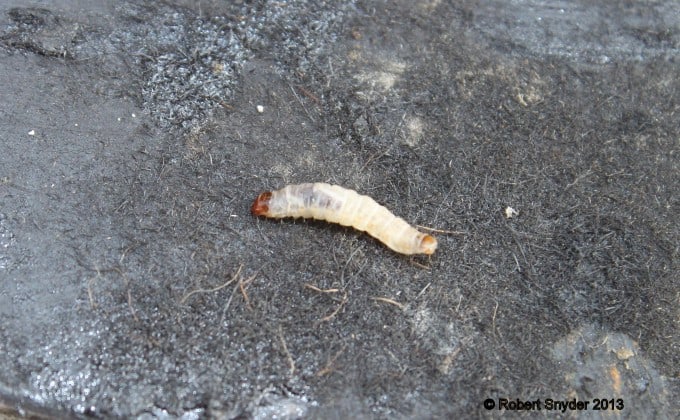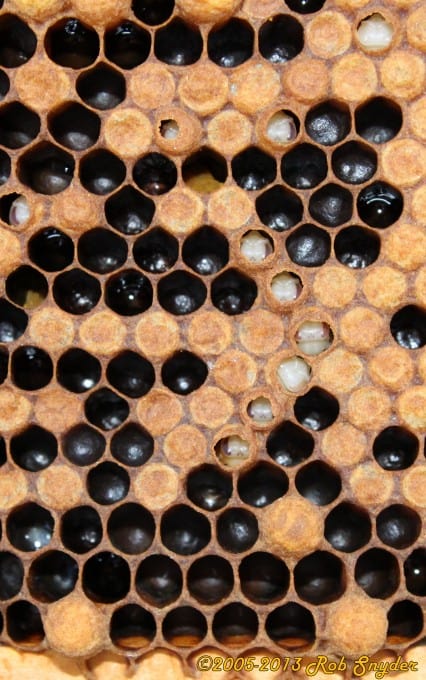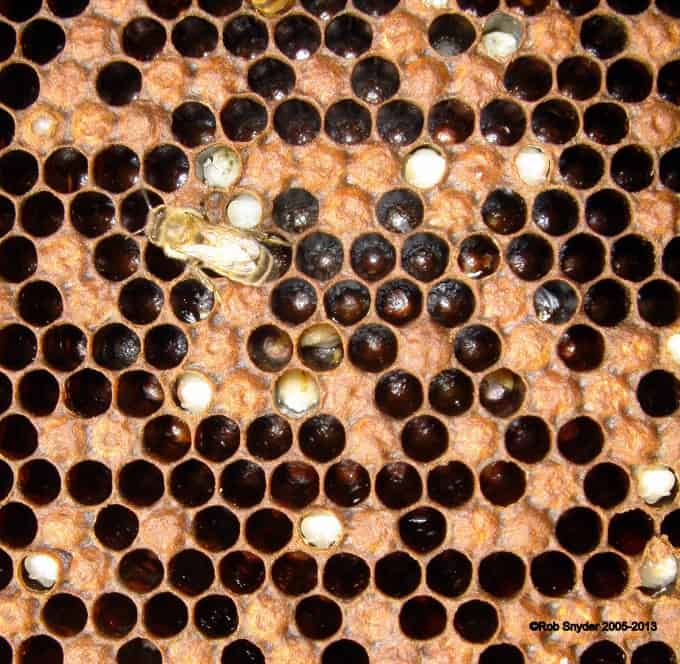

An interesting brood symptom you may come across in a weak hive in the spring is Bald Brood. Bald brood is caused by the Lesser wax moth (Achroia gresella) or the Greater wax moth (Galleria mellonella.) You can see in the image below the linear pattern of uncapping that occurs due to the wax moths tunneling behavior. These symptoms can sometimes be confused as hygienic behavior; I have included an image showing some hygienic behavior of uncapping. One visible difference between hygienic behavior vs. bald brood is that there is no linear pattern of uncapping sealed brood with hygienic behavior. Colonies with bald brood often have raised sidewalls that are slightly above the other sealed brood, this symptom is not usually present when bees are uncapping larva/pupa associated with varroa, a lethal gene or another brood disease. I have seen these symptoms a handful of times over the past several years but in most cases the colonies were weak ranging from 3-6 Frames of bees. The best defense against wax moth is a strong colony. If you investigate cells near the ends of the linear pattern you can probably find the wax moth larva, look for perforations in the sealed cells. For more information on wax moth please see my previous wax moth blog here “Wax Moth“or “Jennie’s blog on Wax moth damage”.






